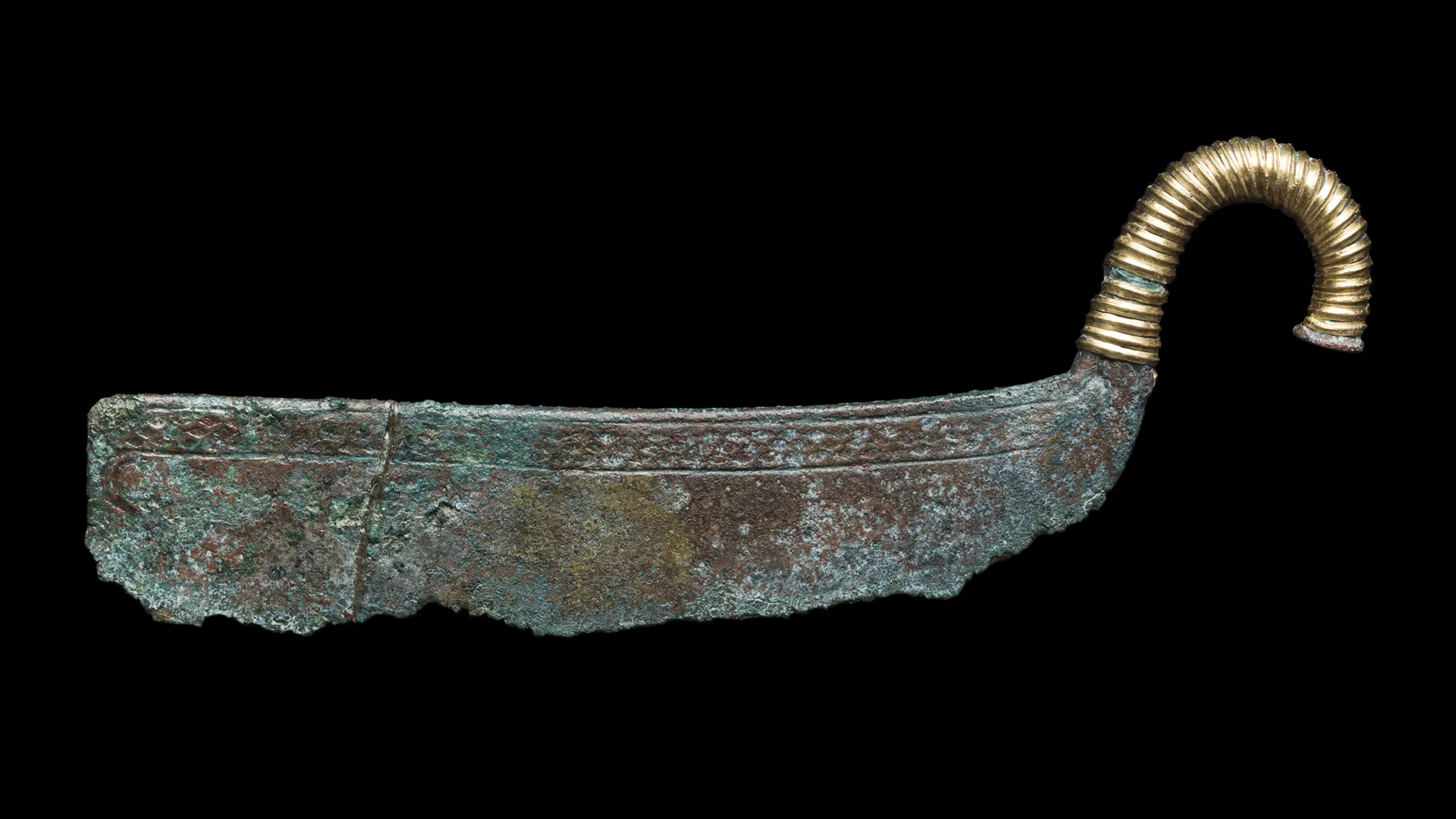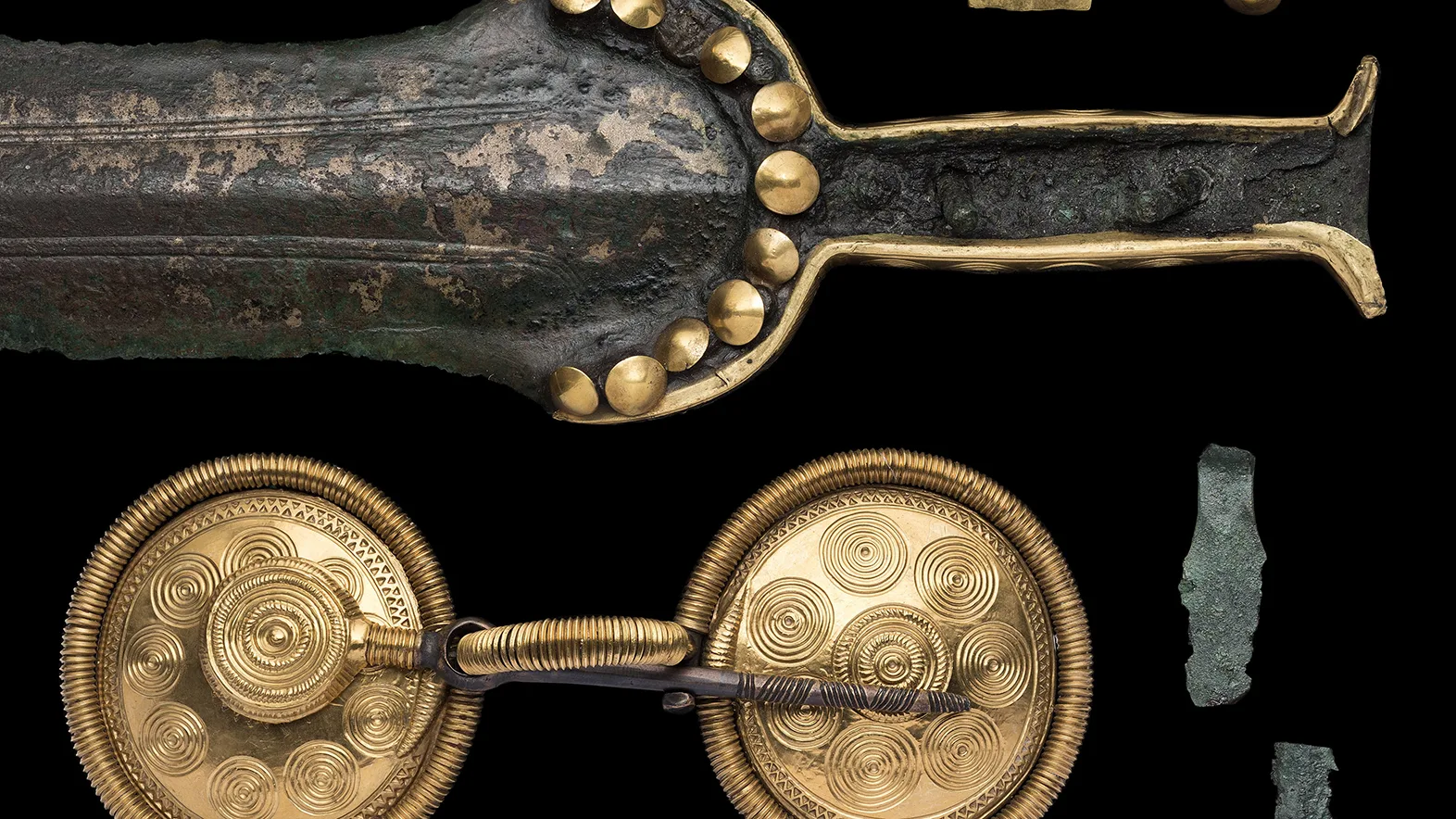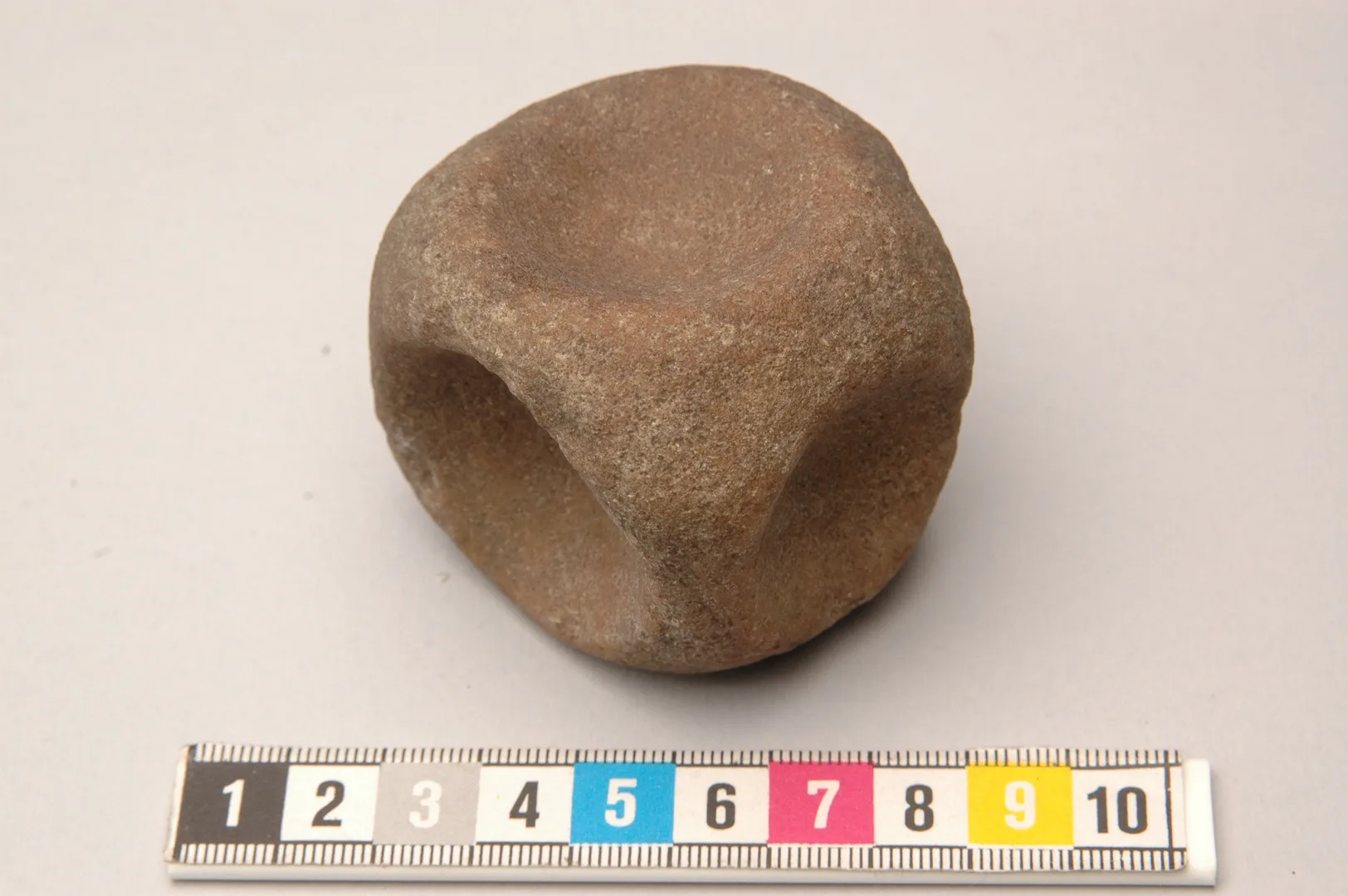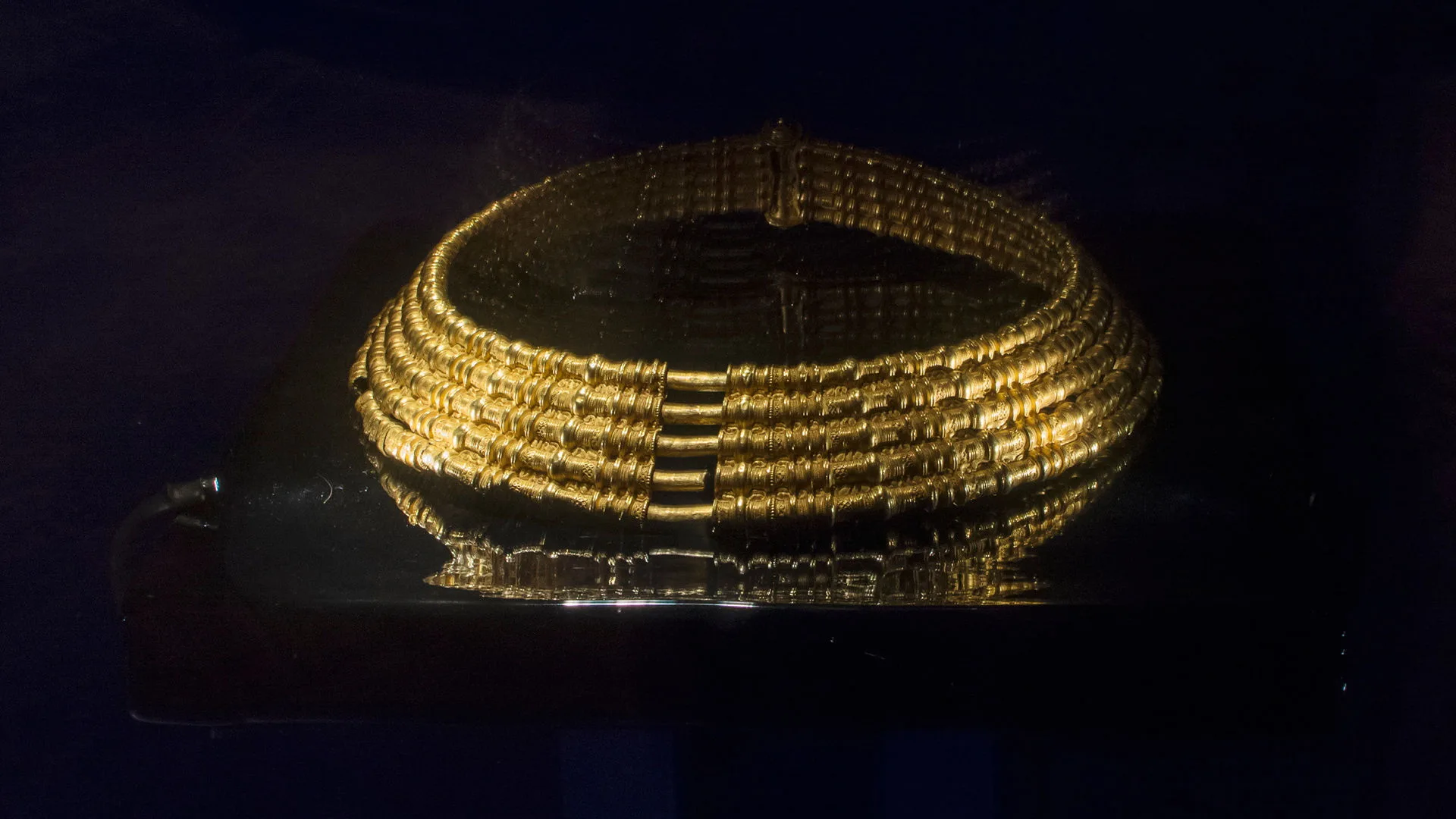A Nordic Bronze Age razor
Stone Age
12,000 BC – 1700 BC
Bronze Age
1700 BC – 500 BC
Iron Age
500 BC – AD 1100

On their own, these sun motifs don’t reveal much about how the myths of the Bronze Age were constructed. But together, they tell a story – a tale of the sun’s journey across the sky and down through the underworld. So says Flemming Kaul, a Danish archaeologist and specialist in the Bronze Age.
He has proposed an interpretation of Nordic bronze razors as bearers of a solar myth. Some of the most exquisite examples are decorated with beautifully crafted images of ships, suns, and various animals. These razors are part of the collections of the Swedish History Museum from the late Bronze Age, dated to around 1100–500 BC.

Razor with probable sun symbols
Razors were among the most important grave goods for men throughout the entire Bronze Age, from 1700 to 500 BC. Even as burial customs evolved and grave offerings became increasingly scarce, these small razors remained – sometimes worn down from frequent use, sometimes preserved in pristine condition.

Razor
Images and symbols
The images on the razors can almost be read like a form of pictographic writing. The ship, the sun, the fish, the bird, and the serpent are the symbols that make up this visual language - along with the razor itself.
The razor is shaped like a ship, with a handle depicting either an animal head or a spiral. According to Flemming Kaul, the direction of the ships depicted on the razors is key to how the motifs should be interpreted. Some face left, others right.
Nearly 400 razors have been studied as part of Kaul’s interpretation of a myth depicting the sun’s daily journey. The imagery is arranged in a cyclical sequence around a wheel cross – one of the most common motifs in rock carvings, interpreted both as a solar symbol and as a wheel.
The myth of the sun’s path
The interpretation by Danish archaeologist Flemmin Kaul is as follows:

Detail of a razor
Myths around the Mediterranean
What do sun myths look like in other parts of Europe and the Mediterranean during the Bronze Age? We know, for instance, that the ship, the sun, and its day-and-night journey were central themes in ancient Egyptian religion at the same time as Sweden’s Bronze Age – something that has influenced Kaul’s interpretation.
Naturally, religion and mythology differ widely across Europe and the Mediterranean world. Yet it’s still possible that certain shared, fundamental beliefs about the sun’s journey once existed. Could it be that there’s a worldview here in northern Europe that runs parallel, at least in part, to the Egyptian conception of the sun’s path? That is the question Flemming Kaul has now raised through his thought-provoking contribution on the symbolic role of razors as carriers of a solar myth.





